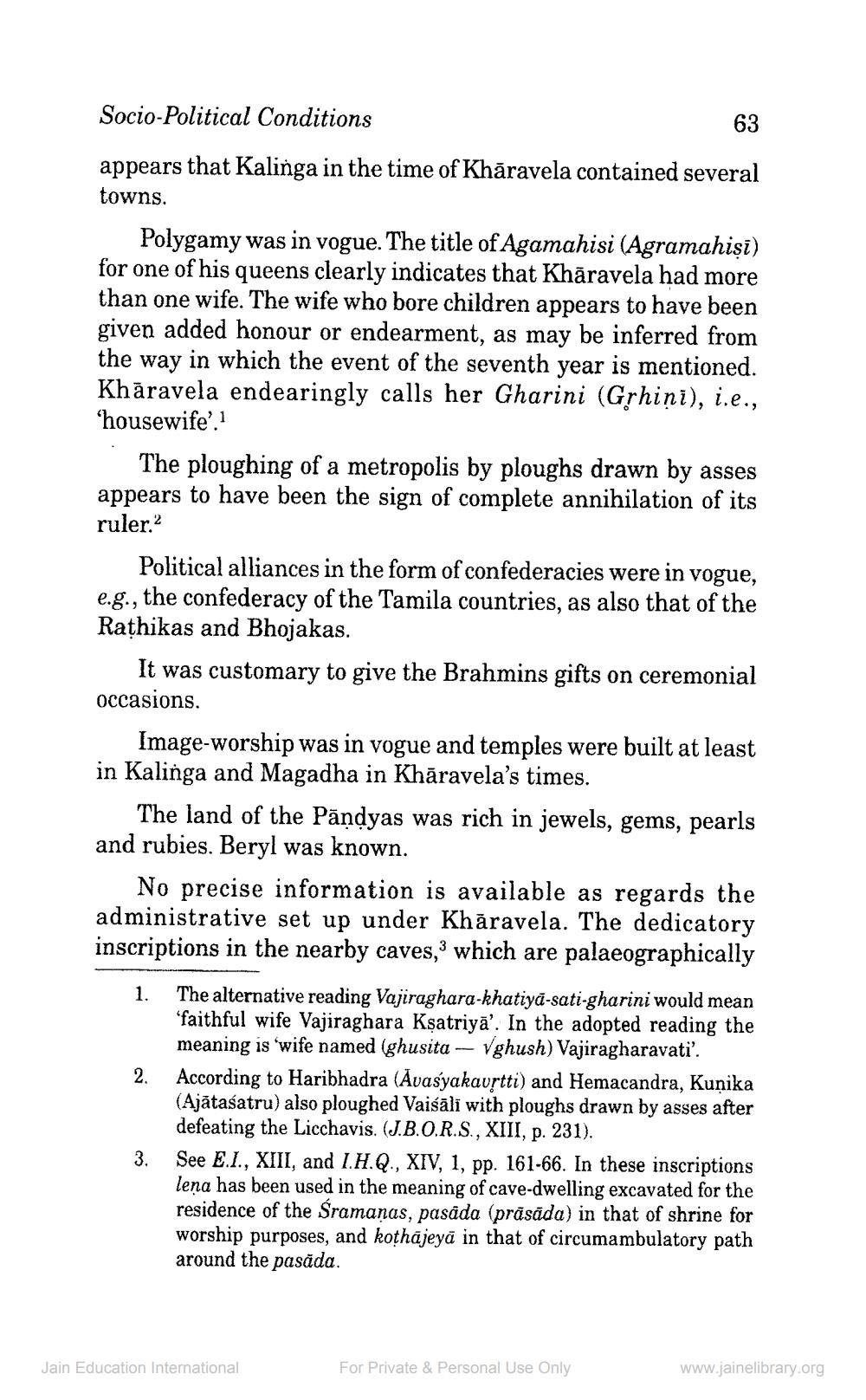________________
Socio-Political Conditions
63
appears that Kalinga in the time of Kharavela contained several towns.
Polygamy was in vogue. The title of Agamahisi (Agramahişi) for one of his queens clearly indicates that Khāravela had more than one wife. The wife who bore children appears to have been given added honour or endearment, as may be inferred from the way in which the event of the seventh year is mentioned. Kharavela endearingly calls her Gharini (Grhini), i.e., 'housewife'.1
The ploughing of a metropolis by ploughs drawn by asses appears to have been the sign of complete annihilation of its ruler.2
Political alliances in the form of confederacies were in vogue, e.g., the confederacy of the Tamila countries, as also that of the Rathikas and Bhojakas.
It was customary to give the Brahmins gifts on ceremonial occasions.
Image-worship was in vogue and temples were built at least in Kalinga and Magadha in Kharavela's times.
The land of the Pandyas was rich in jewels, gems, pearls and rubies. Beryl was known.
No precise information is available as regards the administrative set up under Khāravela. The dedicatory inscriptions in the nearby caves,3 which are palaeographically
1. The alternative reading Vajiraghara-khatiya-sati-gharini would mean 'faithful wife Vajiraghara Kṣatriya'. In the adopted reading the meaning is 'wife named (ghusita - Vghush) Vajiragharavati'.
2. According to Haribhadra (Avasyakavṛtti) and Hemacandra, Kunika (Ajātaśatru) also ploughed Vaisali with ploughs drawn by asses after defeating the Licchavis. (J.B.O.R.S., XIII, p. 231).
3.
See E.I., XIII, and I.H.Q., XIV, 1, pp. 161-66. In these inscriptions lena has been used in the meaning of cave-dwelling excavated for the residence of the Śramanas, pasada (prasāda) in that of shrine for worship purposes, and koṭhājeya in that of circumambulatory path around the pasada.
Jain Education International
For Private & Personal Use Only
www.jainelibrary.org




